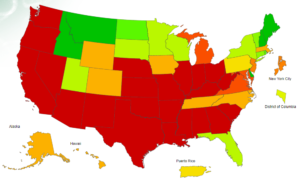
Based on the December 2017 Centers for Disease Control and Prevention (CDC) Health Alert Network, influenza activity has increased significantly with influenza A(H3N2) viruses predominating so far this season. Now, more than ever, it is very important to vaccinate to prevent the spread of the virus.
Last season, vaccine effectiveness against circulating influenza A(H3N2) viruses was estimated to be 32% in the U.S. The CDC expects this season to be the same. For this reason, in addition to influenza vaccination for prevention, the use of antiviral medications for treatment of influenza becomes even more important. The neuraminidase inhibitor (NAI) antiviral medications are most effective in treating influenza and reducing complications when treatment is started early. Evidence from previous influenza seasons suggests that NAI antivirals are underutilized in outpatients and hospitalized patients with influenza who are recommended for treatment.
The CDC Health Advisory was issued to:
- Remind clinicians that influenza should be high on their list of possible diagnoses for ill patients because influenza activity is increasing nationwide, and
- Advise clinicians that all hospitalized patients and all high-risk patients (either hospitalized or outpatient) with suspected influenza should be treated as soon as possible with a neuraminidase inhibitor antiviral. While antiviral drugs work best when treatment is started within 2 days of illness onset, clinical benefit has been observed even when treatment is initiated later.
The Health Advisory also included multiple recommendations for the 2017-2018 season. Read the full advisory.
The Great Plains QIN goal: By 2019, we envision an absolute rate of 90% for adult immunization status assessment, appropriate immunization or referral and documentation of Medicare beneficiary immunization status via electronic methods. This goal will be achieved to educating and assisting healthcare providers to implement the adult immunization recommendations.
We offer a wealth of free evidence-based resources to promote influenza, pneumococcal and herpes zoster vaccination best practices, guidelines and tools to break down barriers to care for disparate populations. To get involved, join our Learning and Action Network (LAN). Together, we play an important role in helping educate and vaccinate patients.

